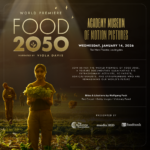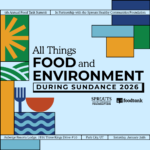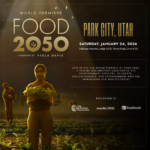Surprise and disbelief. That’s what often follows when people learn about the large water footprint of many meat products.
Common responses include: “Really?” “That can’t be right.” “That’s ridiculous.”
Shock is reasonable after discovering that the global average water footprint – or the total amount of water needed – to produce one pound of beef is 1,800 gallons of water; one pound of pork takes 718 gallons of water. As a comparison, the water footprint of soybeans is 206 gallons; corn is 108 gallons.
The large water footprints for beef, pork and other meats indicate the large volumes of water used for their production. They also suggest a great use of resources beyond water. The question then becomes, why is raising livestock and poultry for meat so resource-intensive?
The answer is mainly based on the food that livestock eat. Here, the water footprint concept can provide some insight. What the water footprint reveals is the magnitude of water “hidden” in meat as a tally of all the water consumed at the various steps during production. Better understanding meat’s resource intensity necessitates a closer look at two crucial factors.
The first has to do with an animal’s efficiency to turn its food into body mass known as feed conversion ratios (FCR) (i.e., identical units of feed to meat, so feed: meat). The range of FCRs is based on the type of animal, and according to Dr. Robert Lawrence of Johns Hopkins University, the ratios are approximately 7:1 for beef, 5:1 for pork and 2.5:1 for poultry. The larger the animal, the larger the percentage of that animal’s body mass is inedible material like bone, skin and tissue. This is why beef conversion ratios are the highest and it takes exponentially less water and energy inputs to produce grains, beans and vegetables than meat. To be clear, raising a beef cow takes more resources because a typical beef cow in the US eats thousands of pounds of the above-listed corn and soybeans during its lifetime. Of course, the cultivation of field crops that are eventually fed to beef cattle require huge amounts of water, fertilizers, fuel to power farm machinery, land for farm fields and so forth. It all adds up.
The second reason for meat production’s great resource intensity is due to its immense scale. Globally, there is a projected “food animal” population of over 20 billion, more than twice that of the current seven billion humans the planet carries, with the animal count expected to rise along with human population growth. The animal production system expanding rapidly around the world is the industrialized concentrated animal feeding operation (CAFOs) model. CAFOs are more efficient strictly in terms of more animals produced, faster animal growth and shorter meat-to-market times because huge numbers of animals are combined into one facility where they are fed grains (and growth promoters) before being butchered. The enormous quantity of feed given to large populations of livestock, poultry and even fish – consisting primarily of corn, soy and other grains – can also exact a heavy toll in terms of resources and external pollution because of the industrial production of these crops. So even though there are perceived economic efficiency gains due to scales of production, the sheer size of these operations – including industrially produced crops and their overreliance on fossil fuels and fertilizers – swamps those gains entirely in terms of real, absolute resource-use and pollution
That’s why revealing the virtual water hidden in meat and explaining its resource-intensity matters; acknowledging the potential problems and limits can lay the groundwork for sensible, sustainable ways forward.
Rather than represent meat production in the abstract, this post brings forward the reality that meat eaten by many people every day has a concrete effect on resource use. Not only is meat resource-intensive, but the system of production, as in the CAFO model, also carries substantial environmental and human health problems rarely accounted for in the race to meet meat demand. Why does this matter? Because as the world gets smaller, owing to population growth, higher incomes and wider adoption of technology, there is a greater strain on resources—a process in which meat is implicated.
In the end, people need to eat regardless of resource availability. Considering that meat does eat up vast amounts of resources, it seems that using it wisely (already crucial) will become even more so in the future. That’s why revealing the virtual water hidden in meat and explaining its resource-intensity matters; acknowledging the potential problems and limits can lay the groundwork for sensible, sustainable ways forward. It also suggests that as feeding the world is a primary objective, humanity might be wise to alter our current trajectory of evermore meat produced industrially at any cost.









